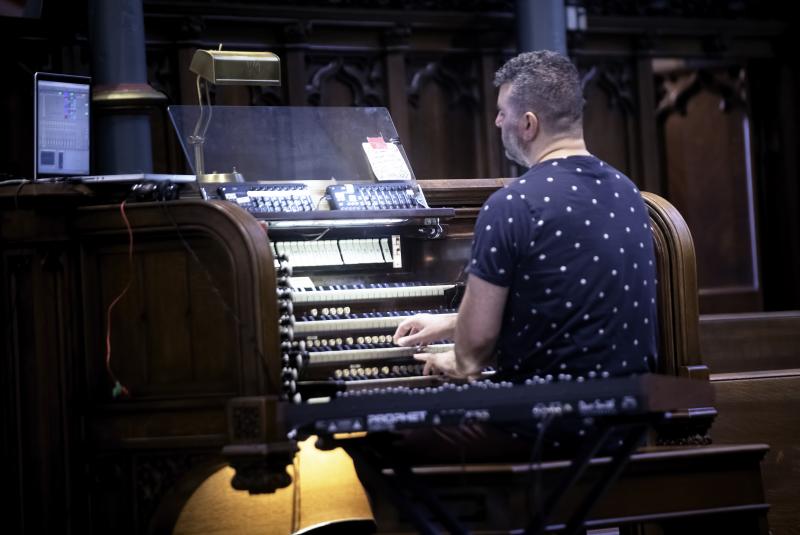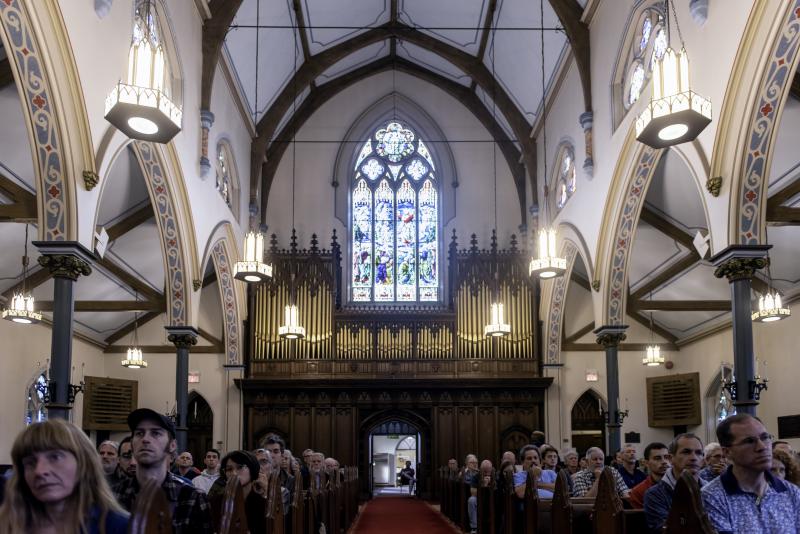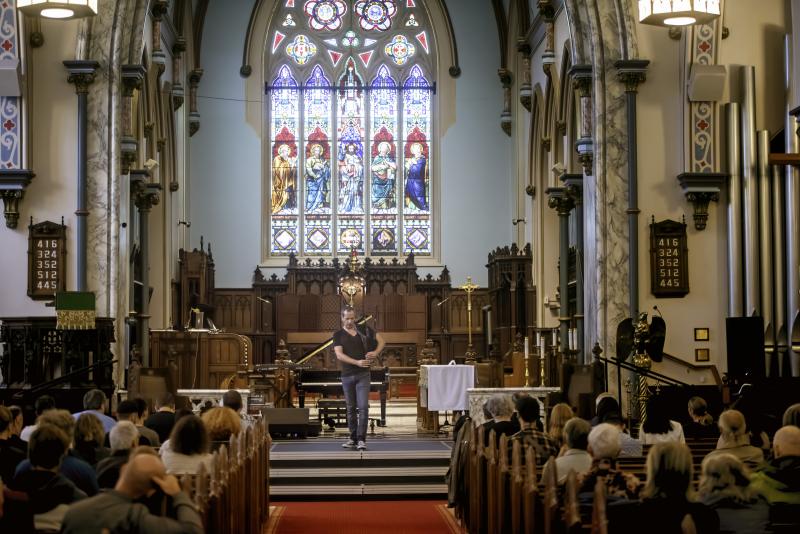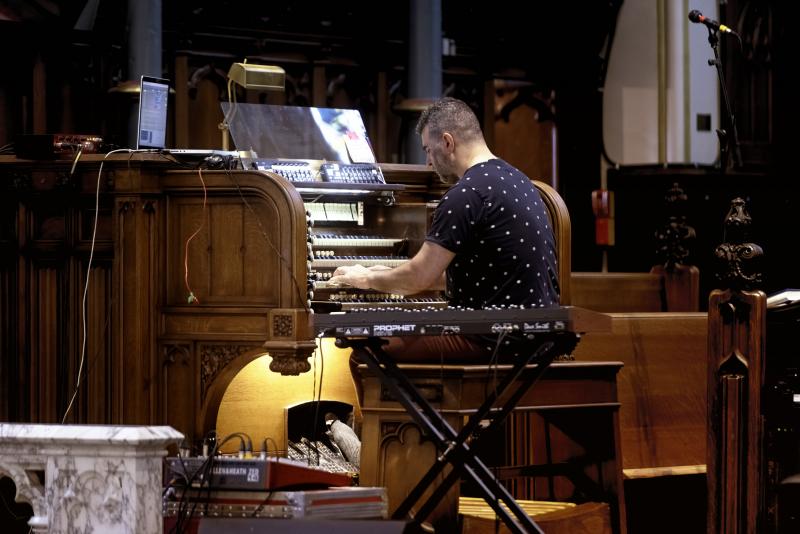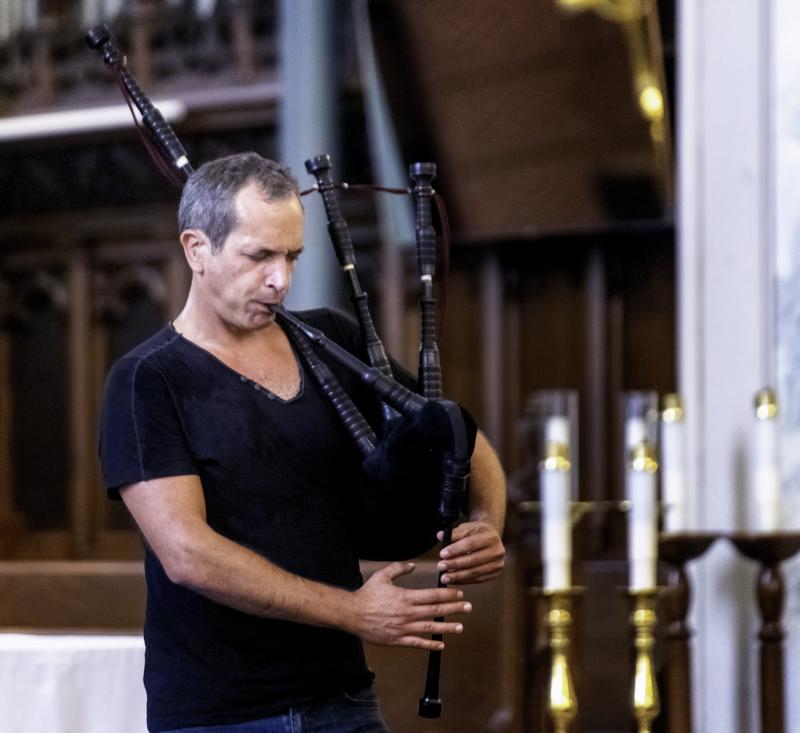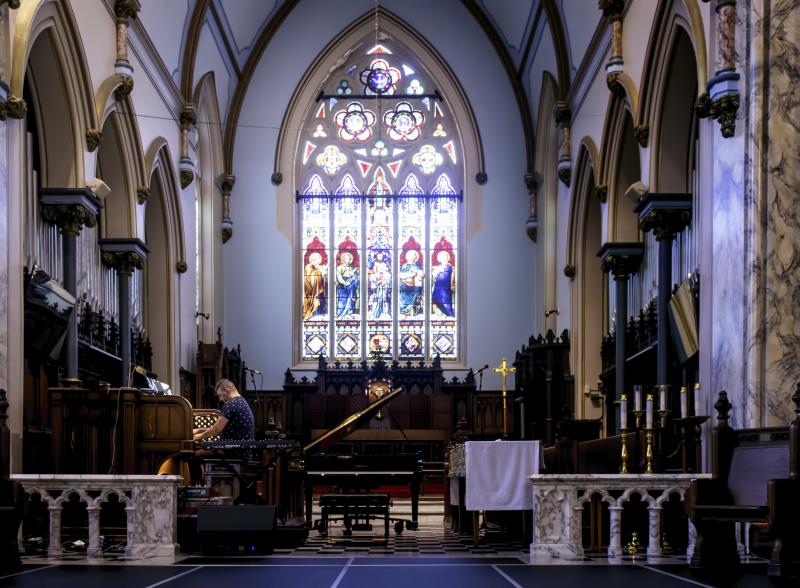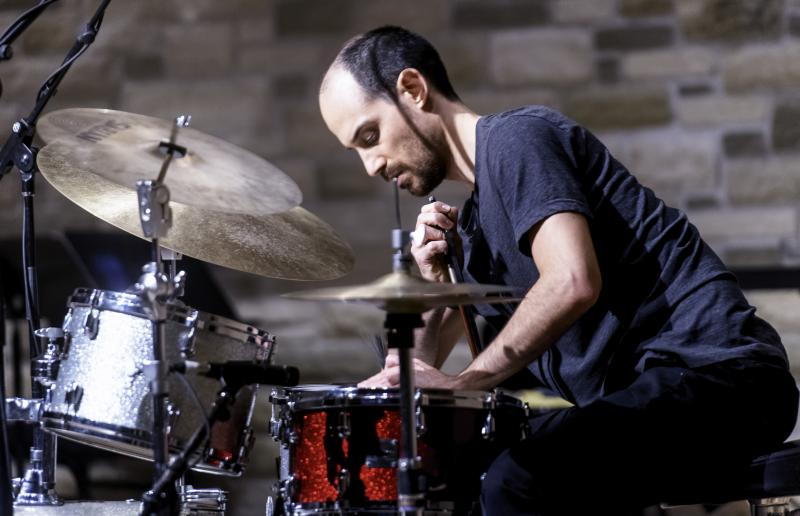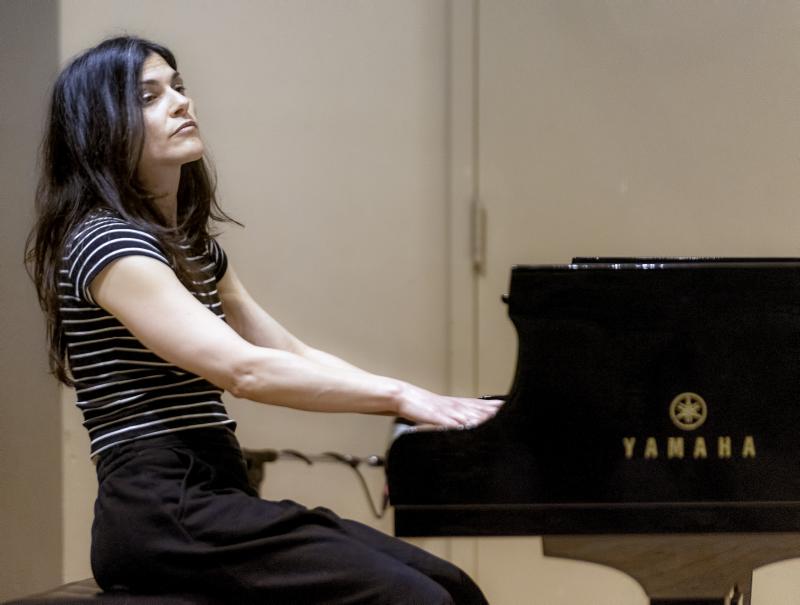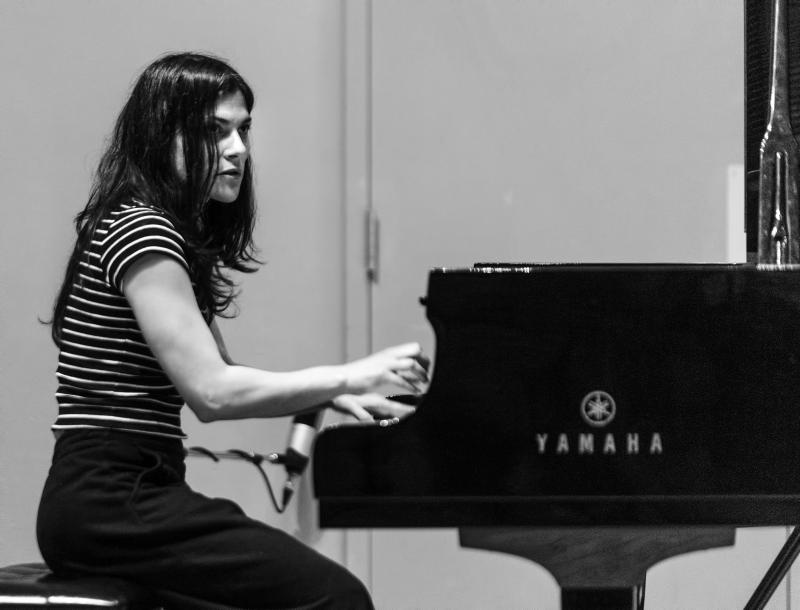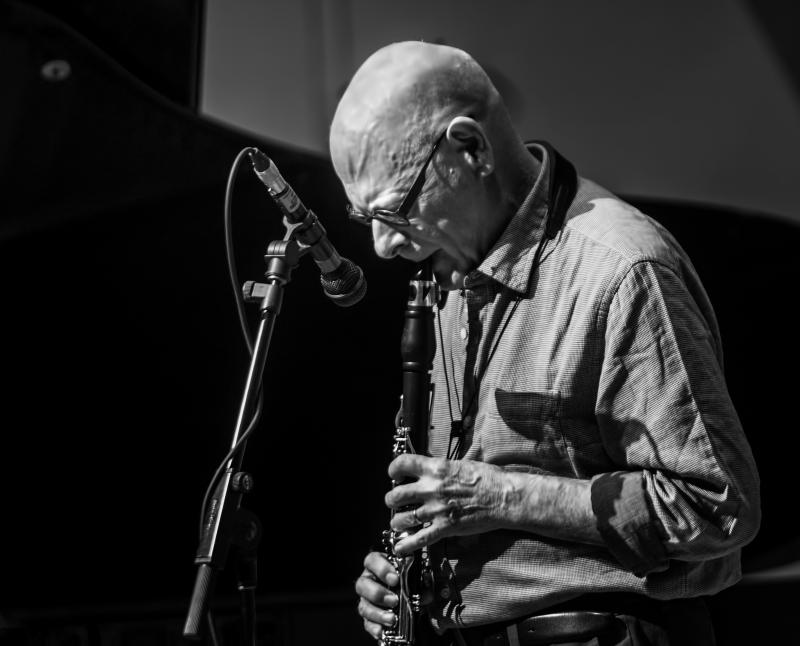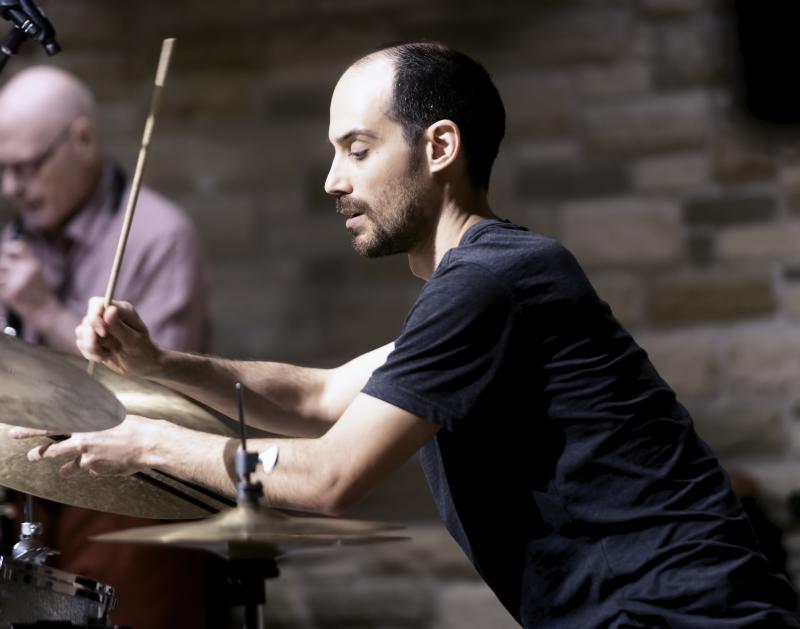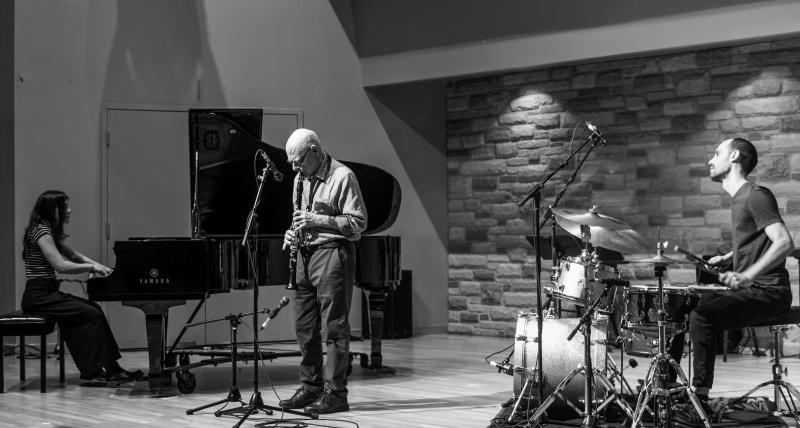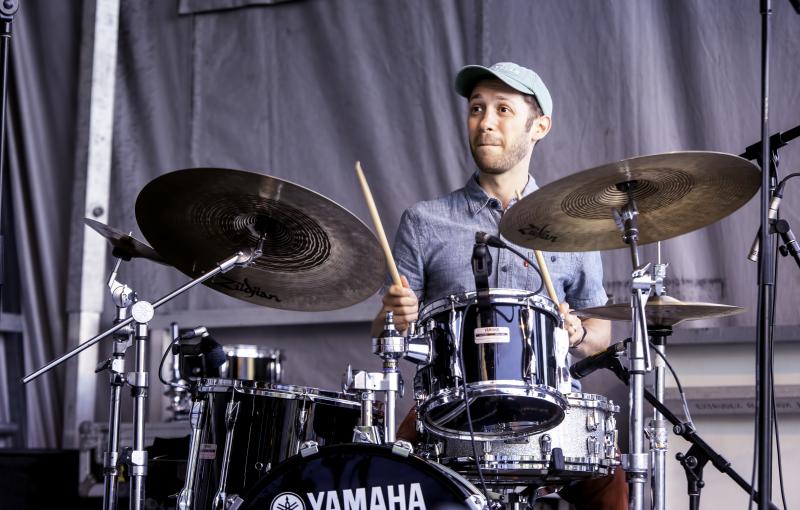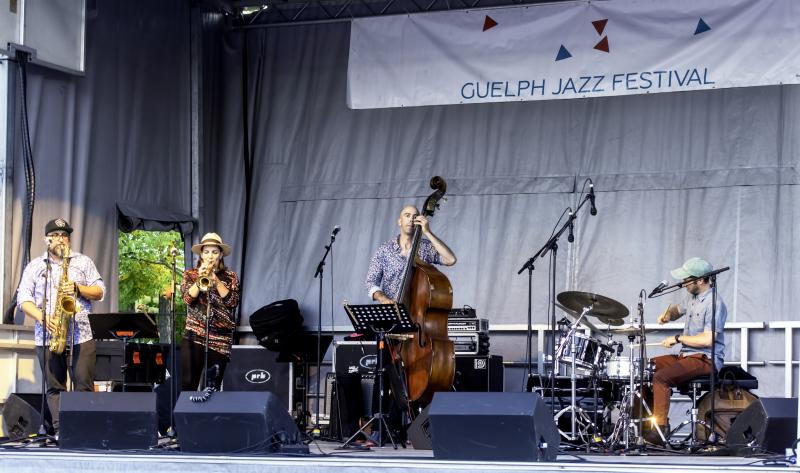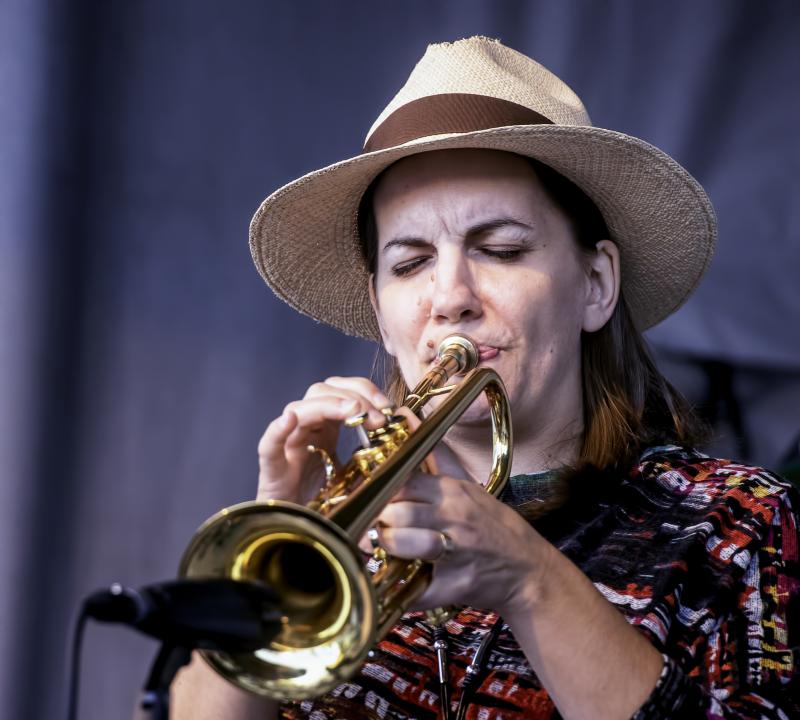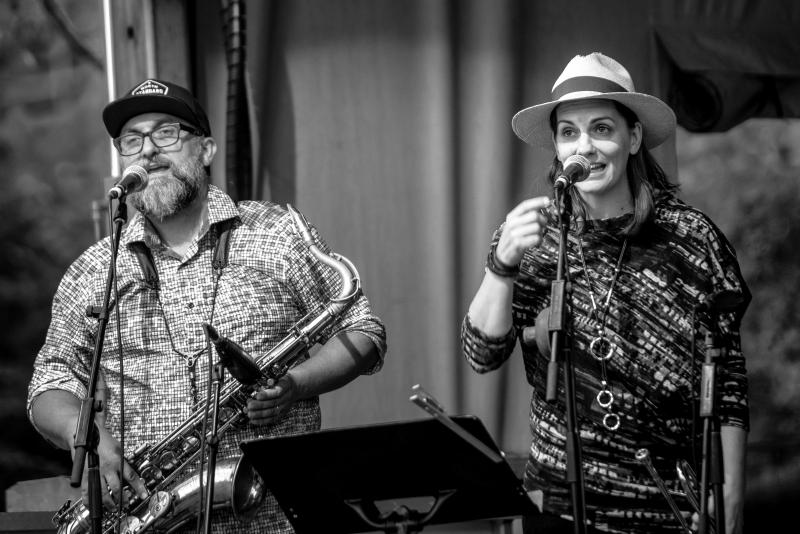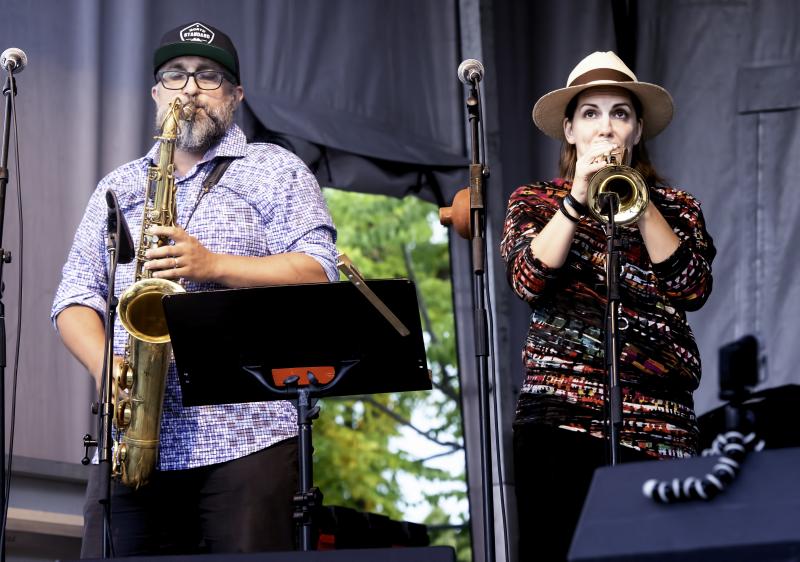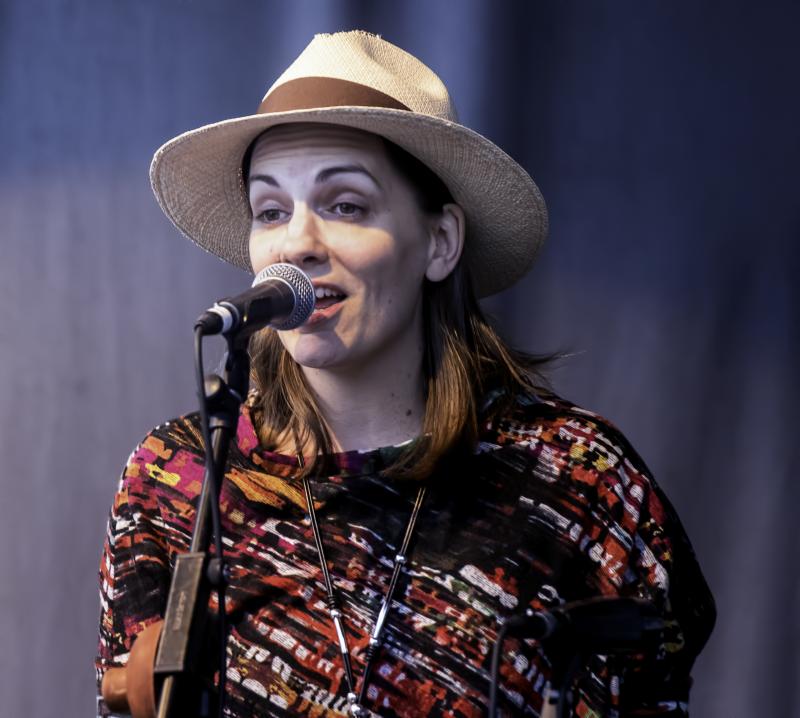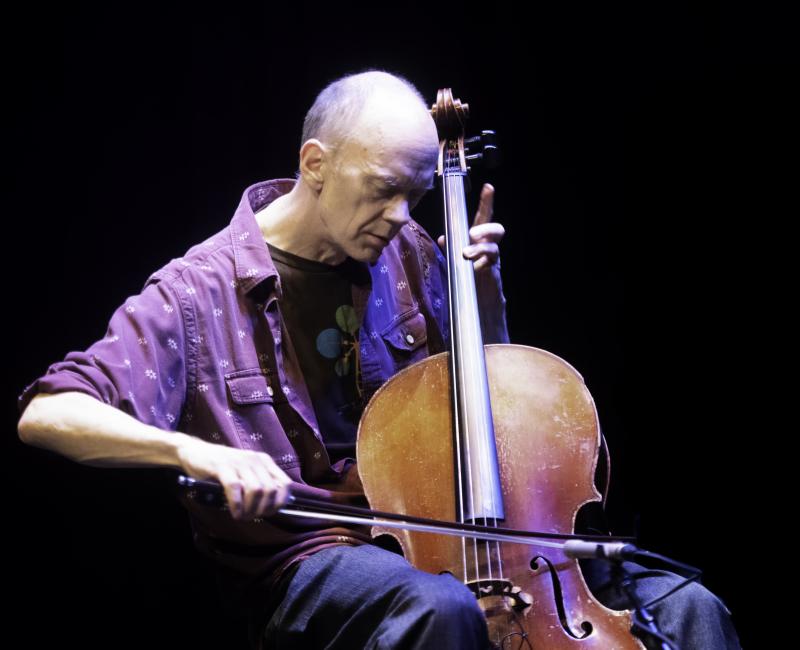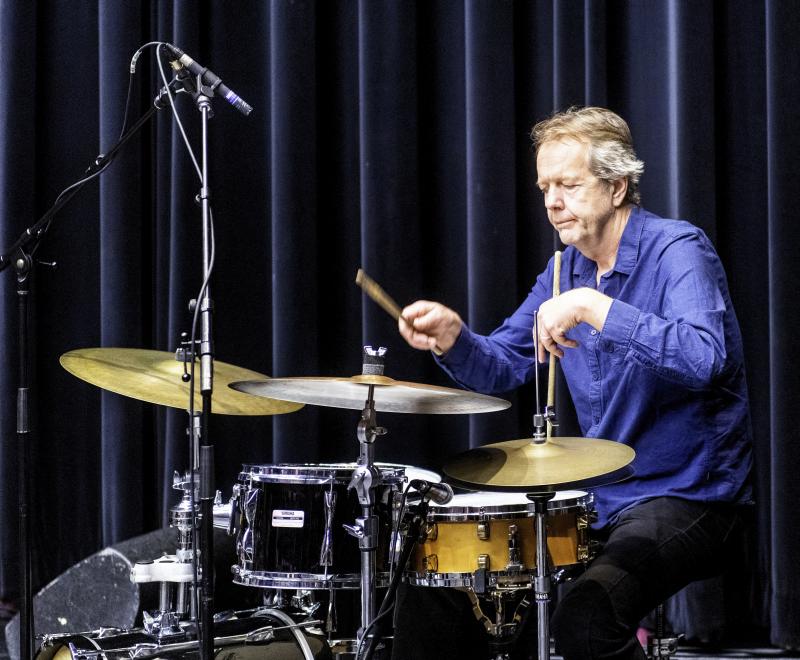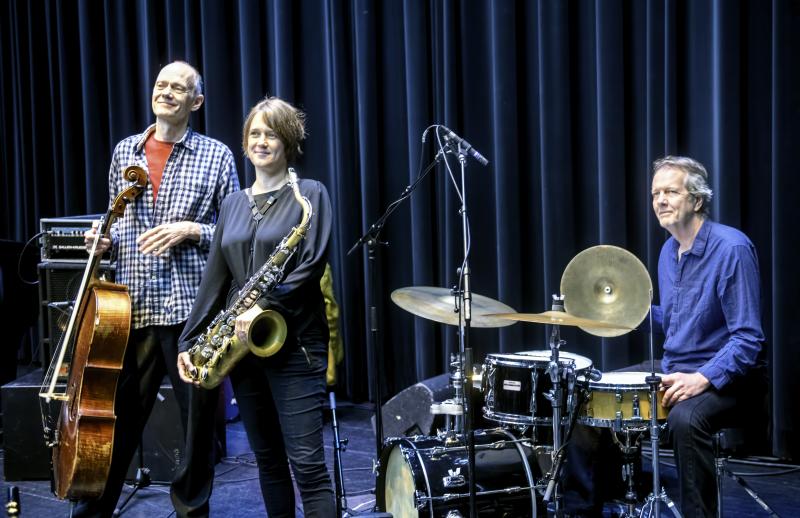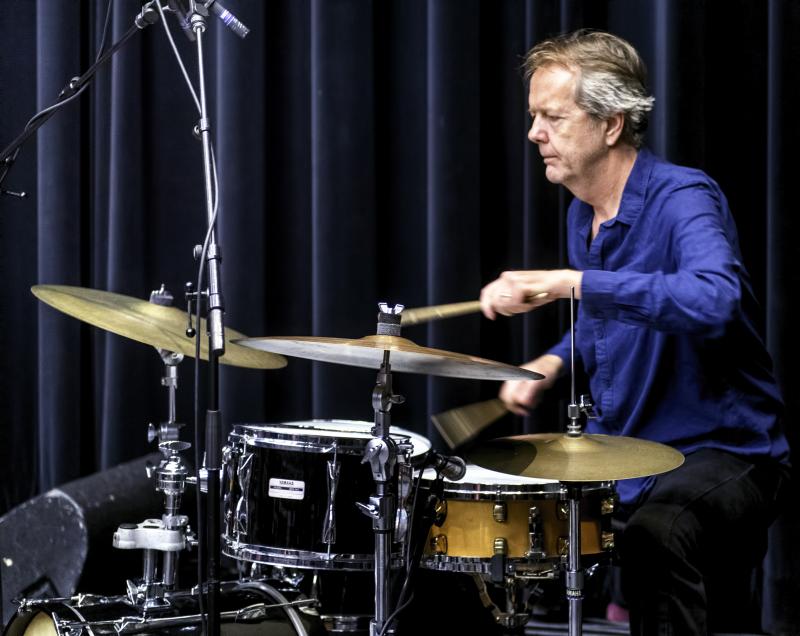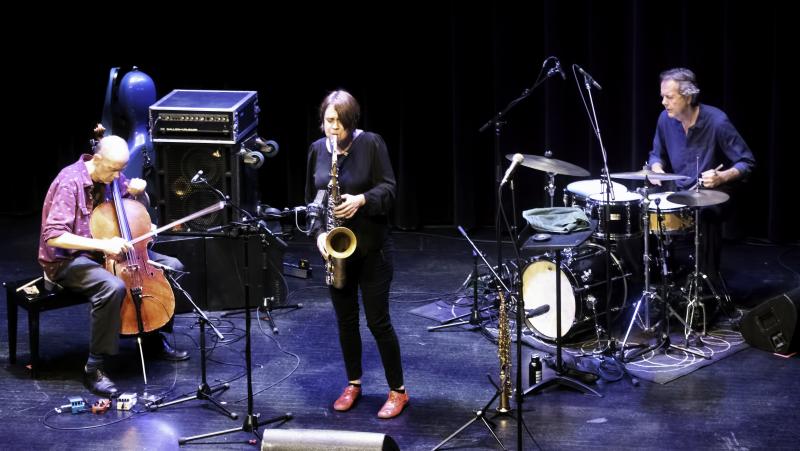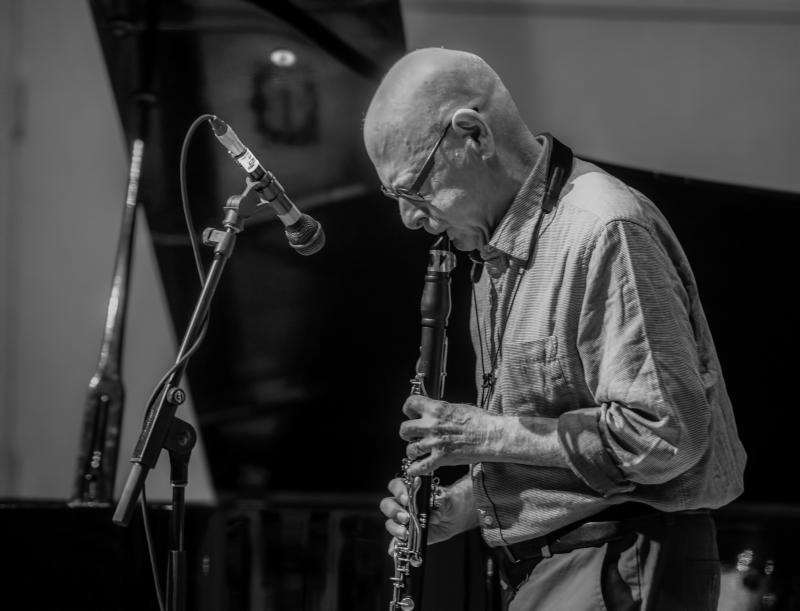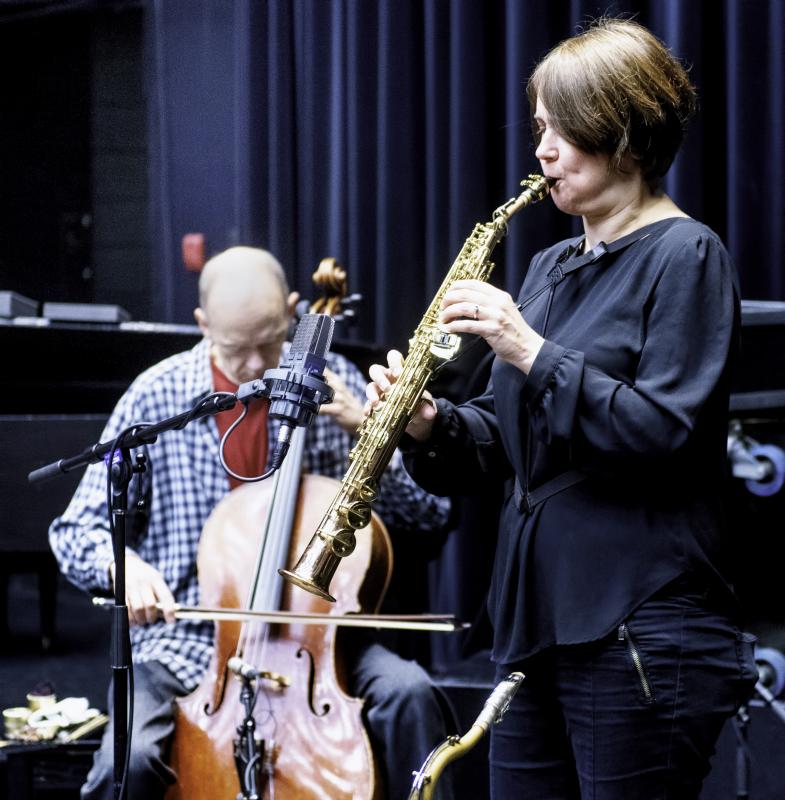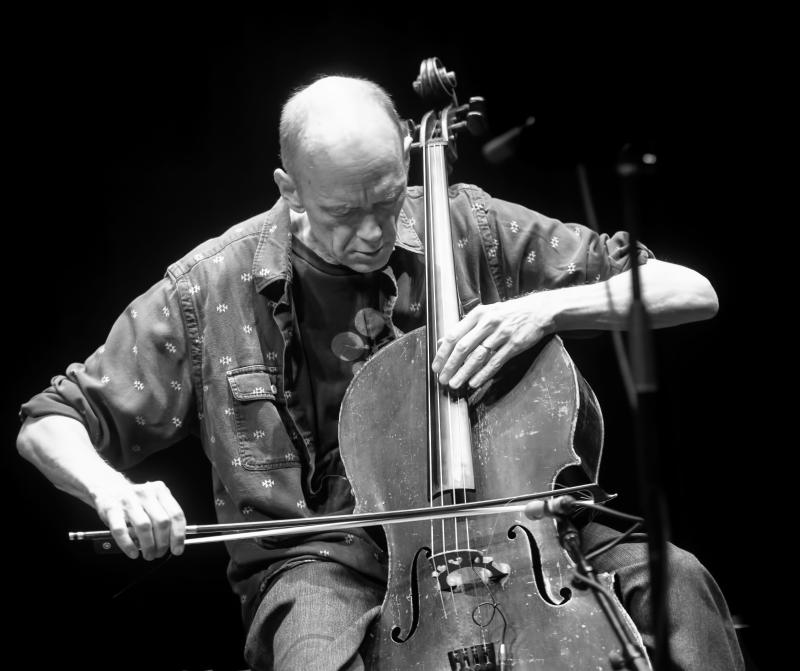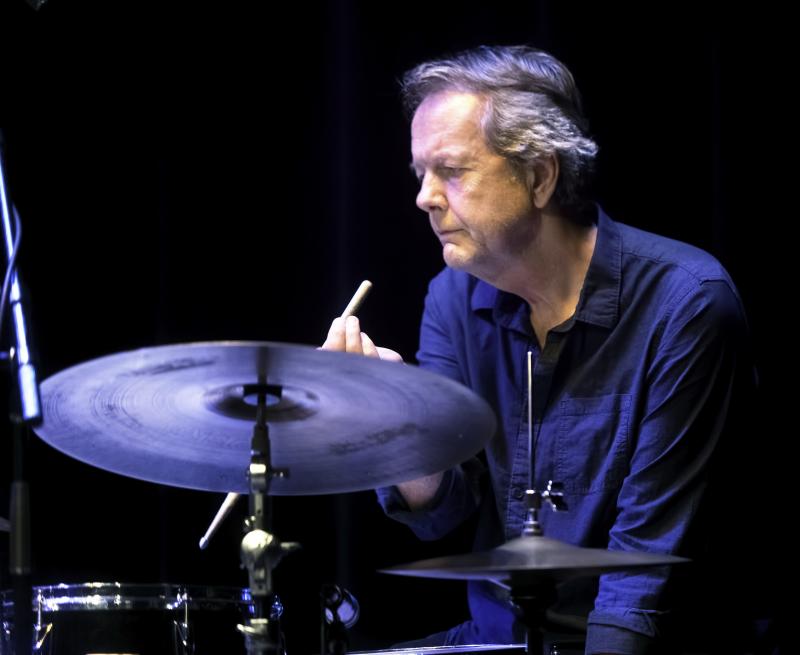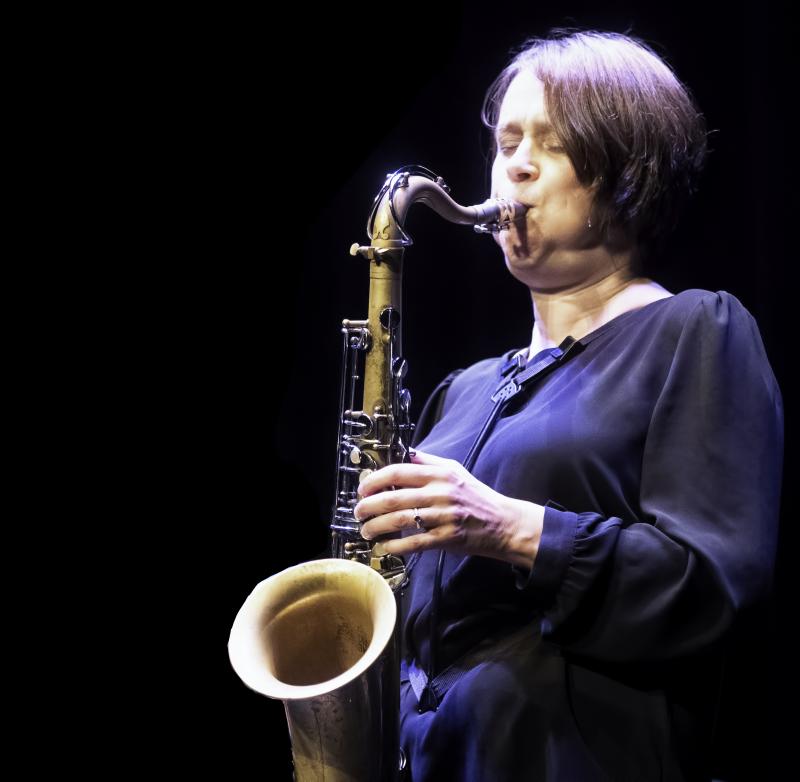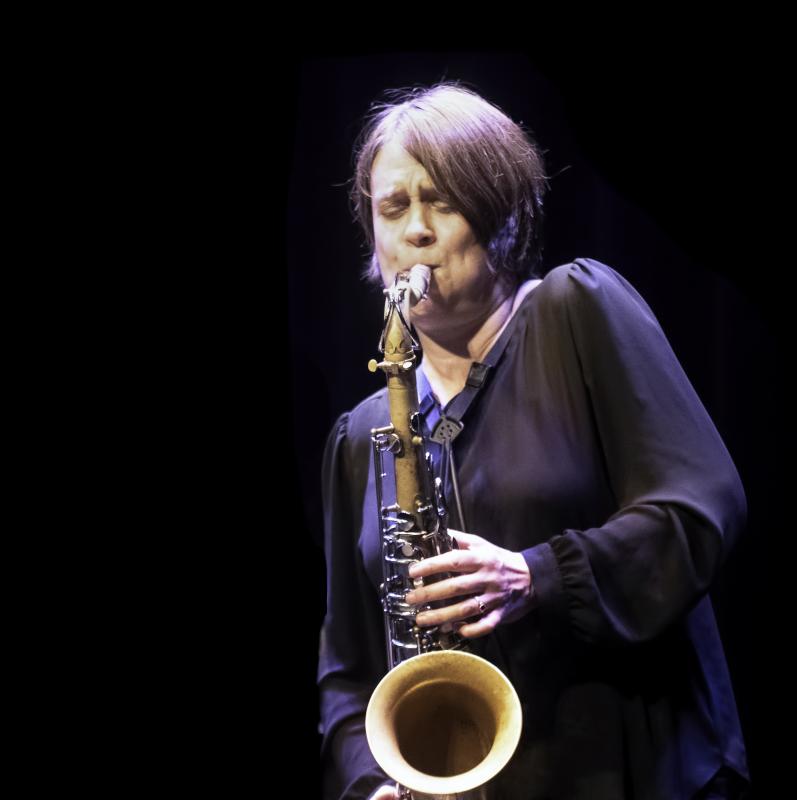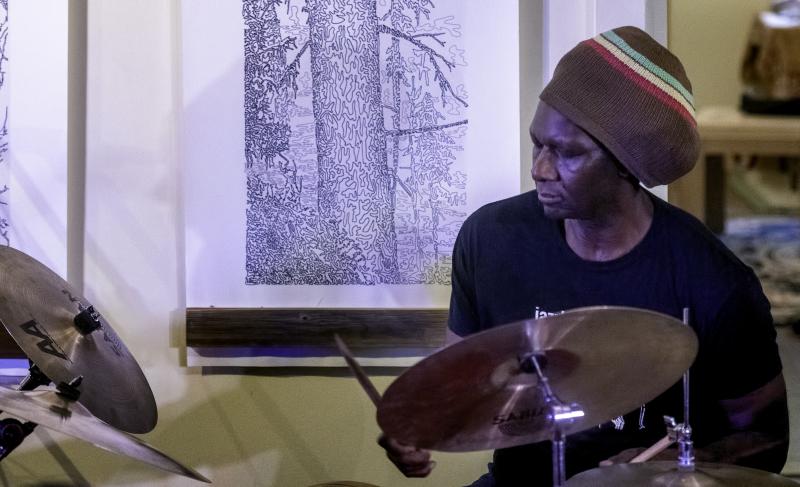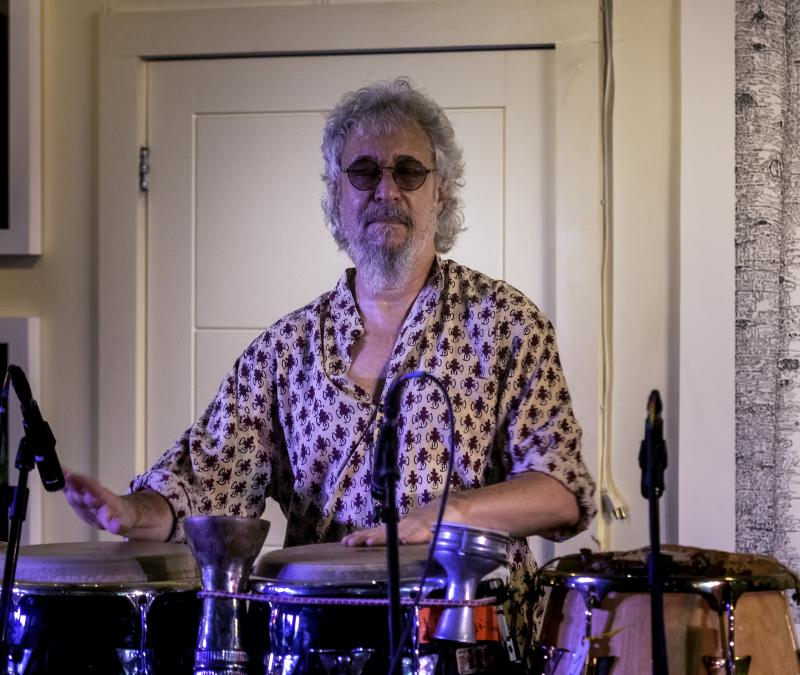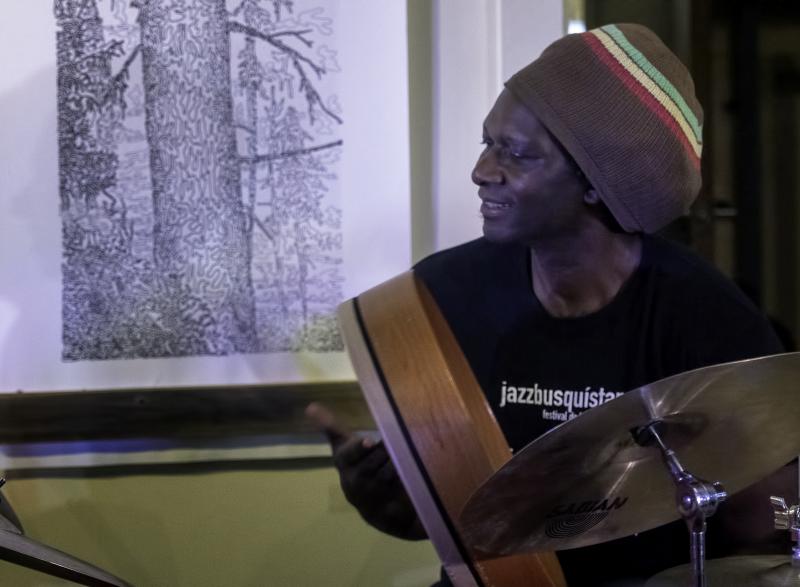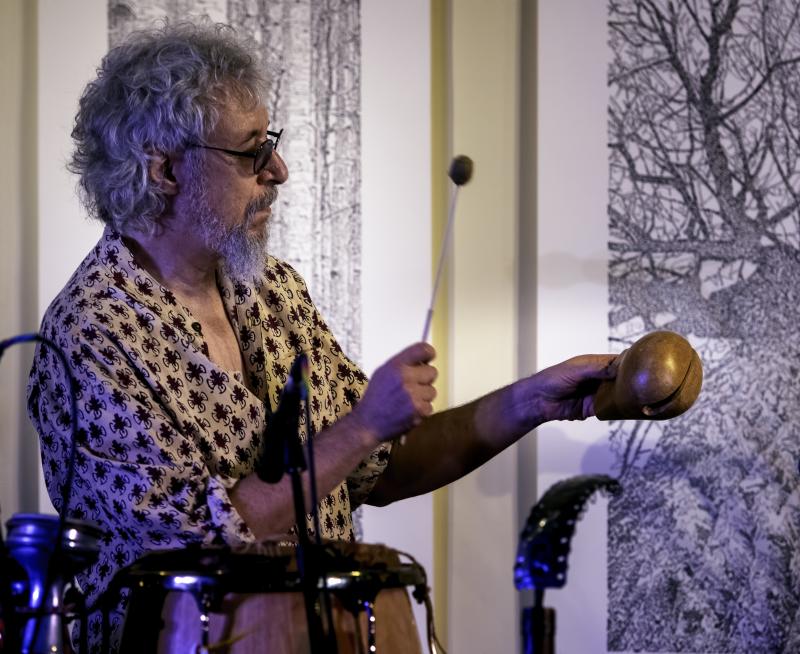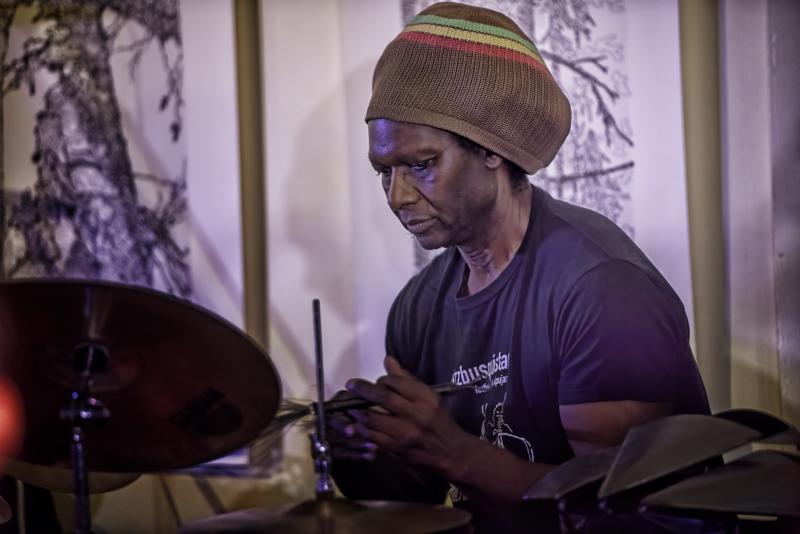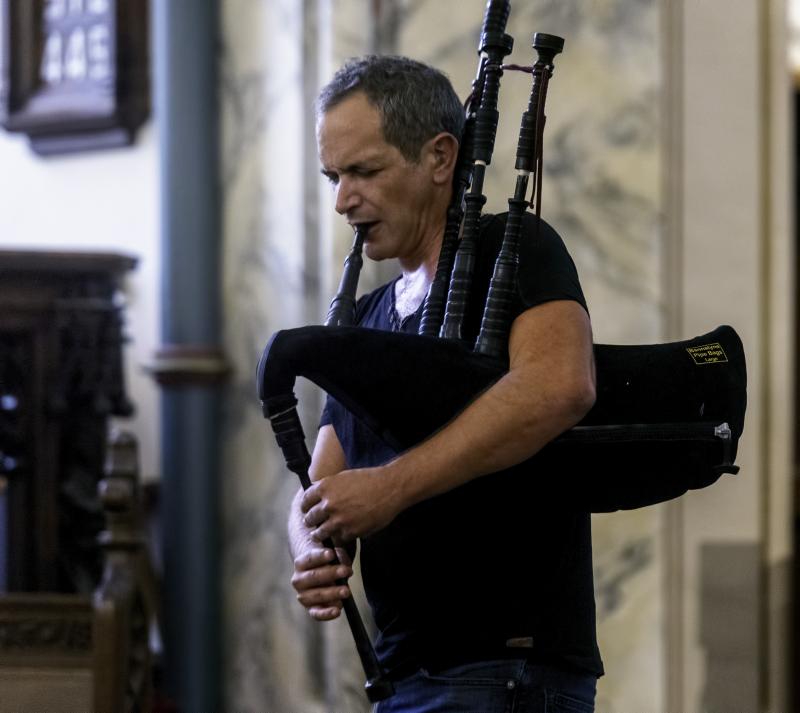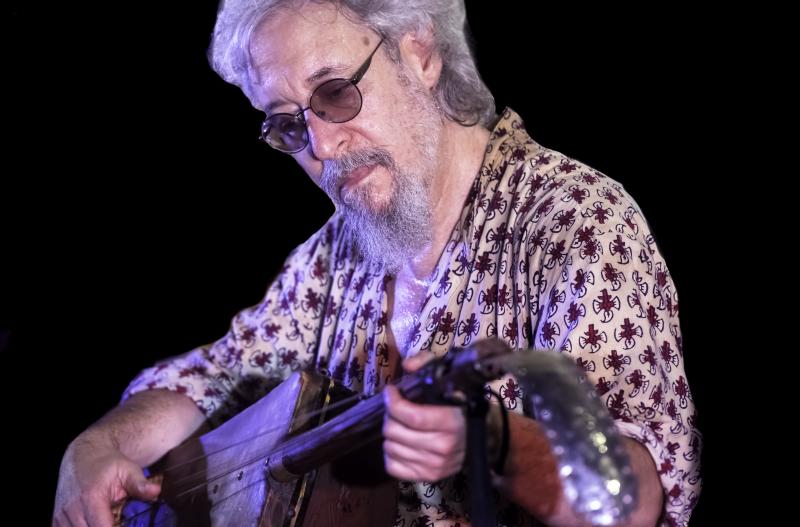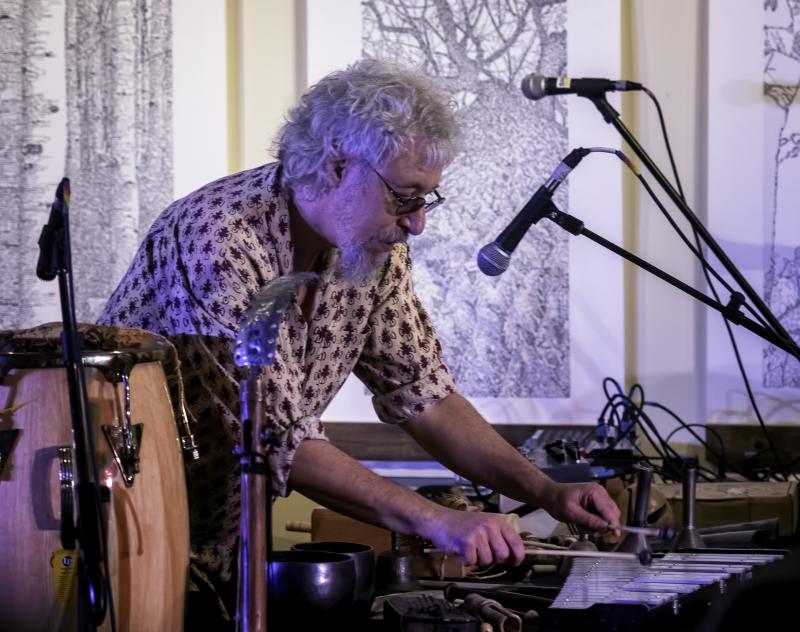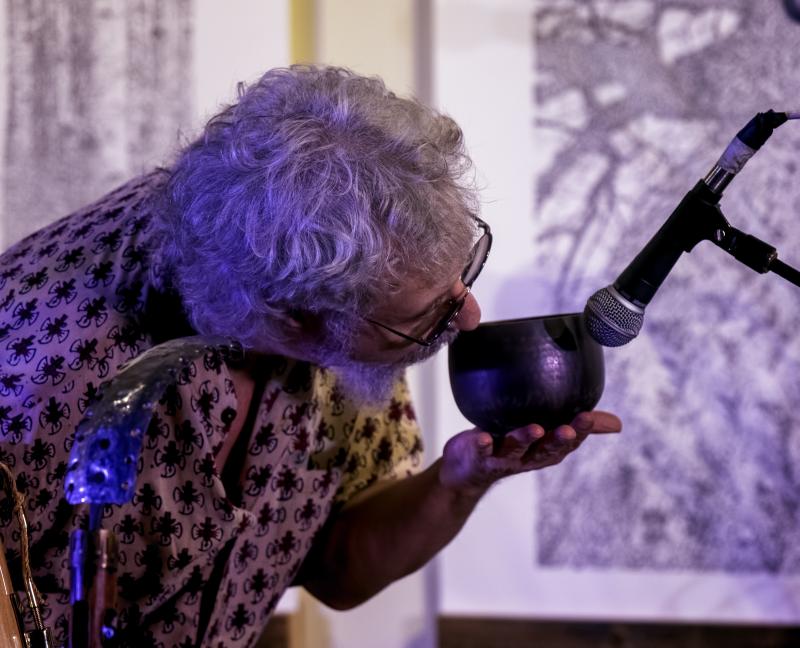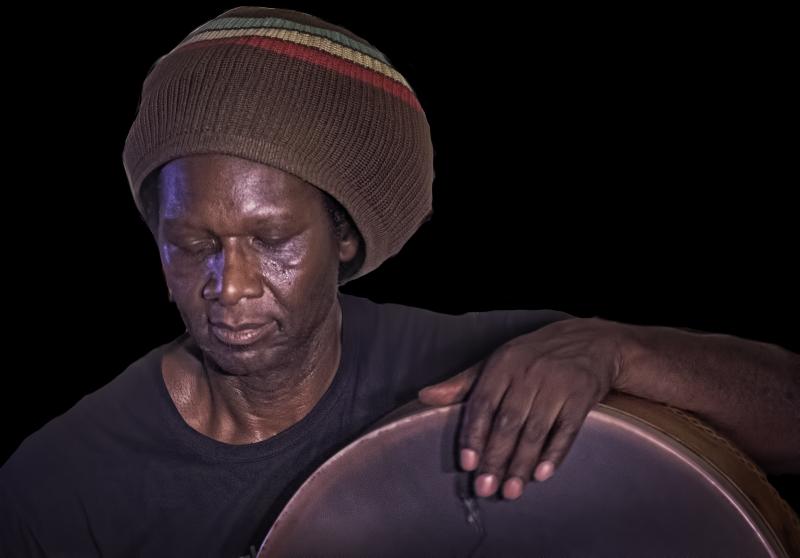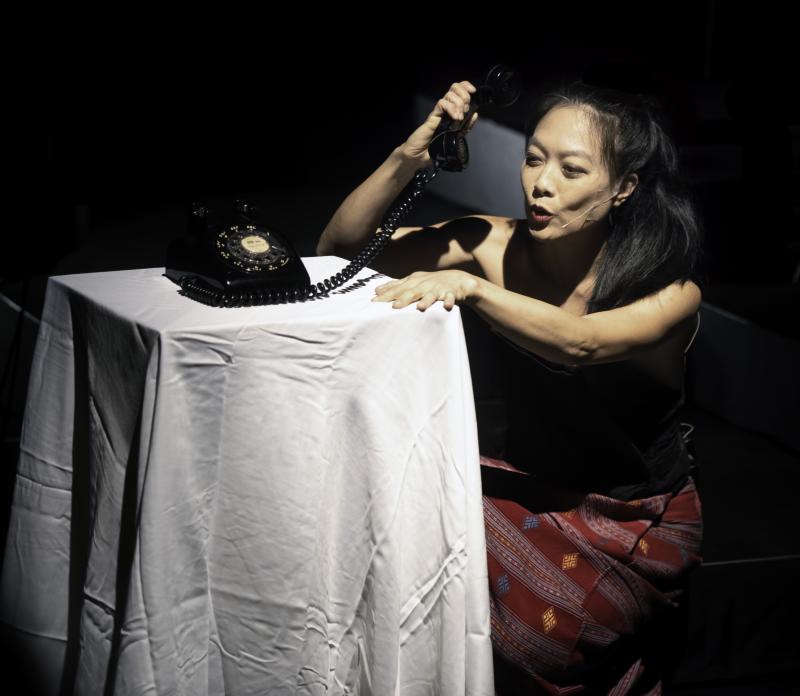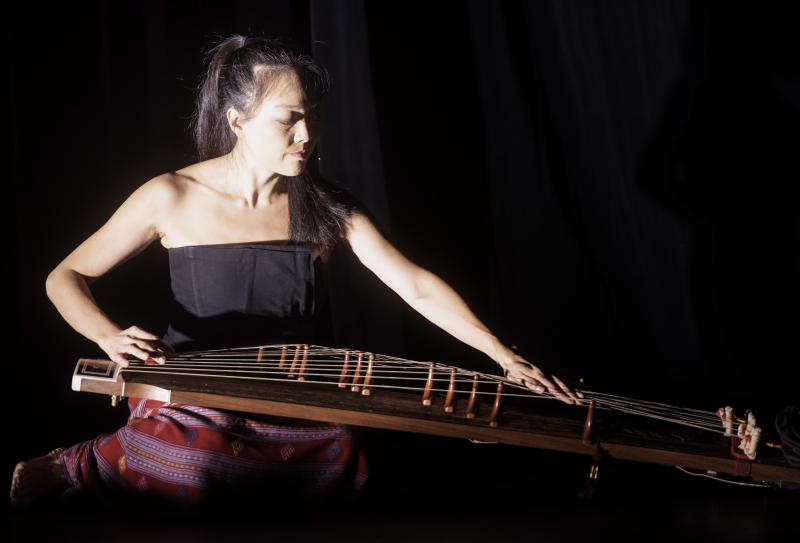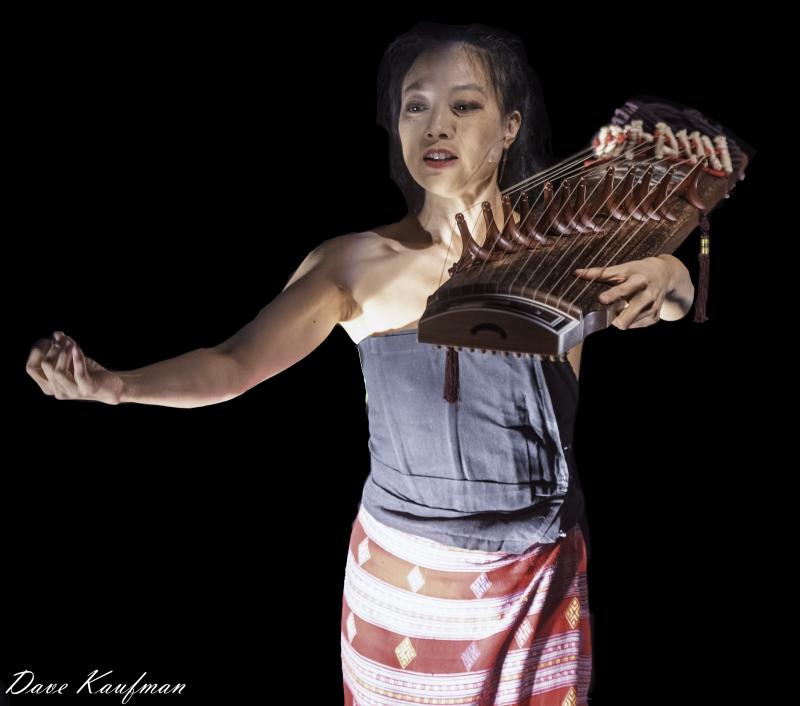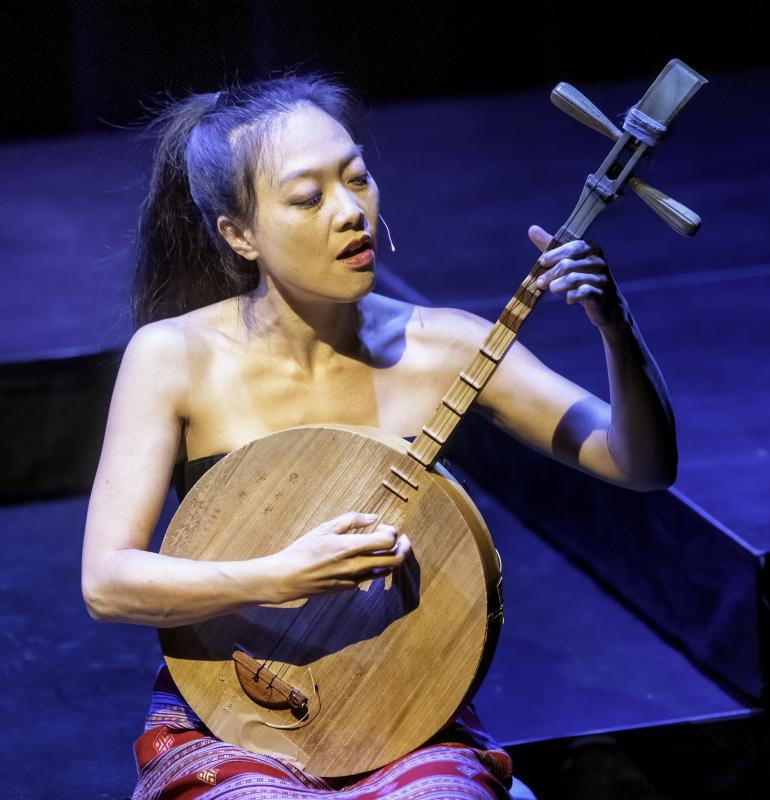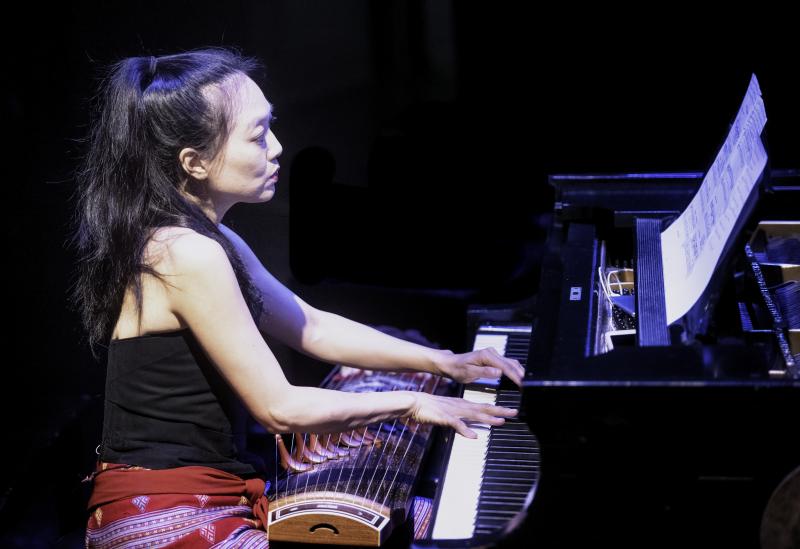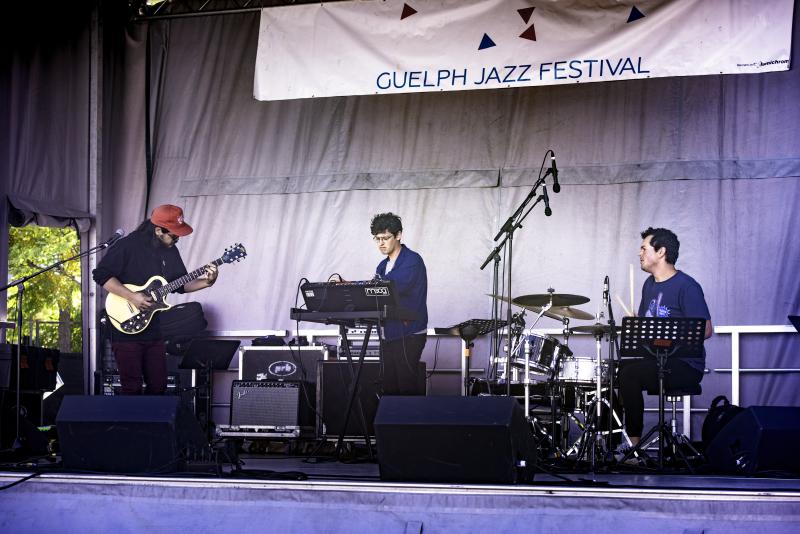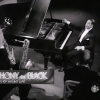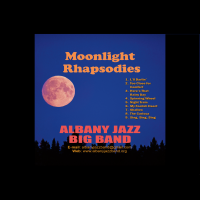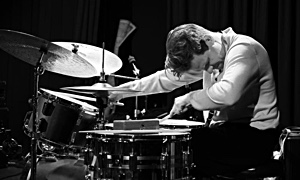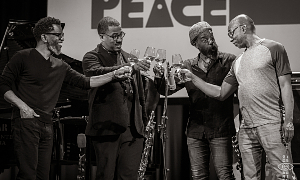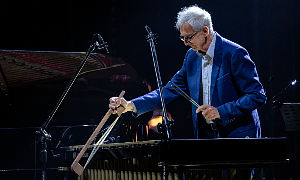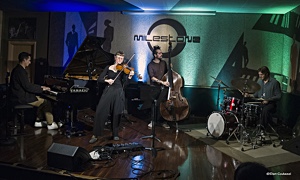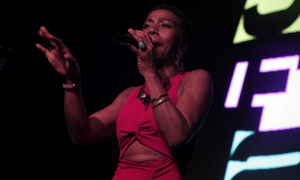Home » Jazz Articles » In Pictures » Sonic Explorations and Creative Improvisations at The Gu...
Sonic Explorations and Creative Improvisations at The Guelph Jazz Festival
Scott Thomson has served as artistic director of the Guelph Jazz Festival (GJF) for the past three years. This year he was ably assisted by Karen Ng, a notable saxophonist on Toronto's improvised music scene. The festival is devoted to creative improvised music but offers an immense variety of musical and theatrical experiences. This year's music festival began in the early evening on Thursday (9/12) and ended with a noon concert on Sunday (9/15). The bulk of the events were concentrated on Friday and Saturday. The indoor concerts took place at a range of musical venues around the downtown core. There was also an outdoor stage in Market Square, an area surrounded by bars, coffee shops, and restaurants. I've been an enthusiastic jazz festival goer for many years, but this was my first time attending GJF. The festival has a commitment to promoting Canadian artists. In addition, the festival organizers have a distinctive vision and artistic aesthetic that creates a rather unique experience.
My festival experience began with an early evening concert by Karuna, a duo featuring master percussionists Hamid Drake and Adam Rudolph. I have had the pleasure of seeing both musicians play on several occasions. I was also fortunate to see them play together with saxophonist Dave Liebman at the New York City Winter Jazz Festival earlier this year. However, this was my first time seeing them play as a duo. Rudolph and Drake had first played together as teenagers almost 50 years earlier and had played together often over the decades. In addition to a hand drum set, Rudolph employed a wide variety of percussion devices, whistles, bells, shakers and assorted instruments from all over the world. Drake similarly used an expansive toolset in addition to his drum kit. The duo has remarkable telepathy and followed unpredictable trajectories with many points of convergence and divergence. The music effortlessly fused worldly rhythms into something wholly distinct. As the name Karuna suggests, the music has a spiritual quality to it. There were many moments of great beauty, including Drake softly singing "By the Rivers of Babylon." The concert ended with the duo seated in front of their drum kits with Drake playing an African frame drum and chanting in Arabic. Rudolph played a sintir, a Moroccan stringed instrument (associated with Gnawa musicians) and harmonized with Drake. It was a beautiful ending to the concert and a splendid beginning to my first GJF experience.
The Friday evening set featured an outstanding double bill. The Brodie West Quintet, a Toronto based group that has been around for a few years, performed first. West is an accomplished alto saxophonist with a distinctive tone and a very fine composer. The quintet includes Tania Gill on piano, Josh Cole on bass and the formidable drumming tandem of Evan Cartwright and Nick Fraser. The performance largely drew on music from their excellent album Clips released in 2018. The music often began with West playing short melodic phrases, initially at a slow tempo and with spare accompaniment. The music slowly builds and evolves in unpredictable ways. The music could be alternately atonal or richly melodic. The performance emphasized the fine compositions and the work of the ensemble over soloists, who nevertheless had their opportunities to shine.
The second act featured Ingrid Laubrock on tenor and soprano sax, Tom Rainey on drums and Hank Roberts on cello. Laubrock and Rainey have worked together for many years in a wide range of contexts (as leaders and collaborators) playing freely improvised as well as composed music. Laubrock is a rather accomplished and distinctive composer. Her most recent album, Contemporary Chaos, is a bold, ambitious and brilliant free jazz-orchestral work that I thought was one of the best albums of 2018. Hank Roberts, a cellist, was a musician of considerable renown in the heyday of the Downtown New York music scene of the 1980s and 90s before moving on to other pursuits. To my understanding, this trio had only played together a small number of times before this concert. That said, they blended seamlessly as if they had played together for years. It was a most impressive 90-minute set with master improvisers effortlessly shifting textures, roles, and dynamics to create "evocative sound worlds."
The Saturday shows at the Guelph Jazz Festival began with an intriguing double bill of solo performances featuring Erwan Keravec on the Scottish bagpipes and John Kameel Farah on pipe organ and electronics. The show took place at St. Georges Church, a beautiful 200-year-old church that is home to a magnificent 3000 pipes organ (built nearly a century ago). Apparently, Farah had done a five-hour soundcheck prior to the show to meet his exacting standards. He also advised attendees to move to the middle pews to optimize their listening experience. Both musicians produced startling soundscapes the likes I had never heard previously. The shows presented music that possessed both great lyrical beauty and jarring abrasive sounds. It was a remarkable musical experience and bold artistic initiative in keeping with the vision of this festival.
Jen Shyu gave a solo performance of "Nine Doors" a haunting multilingual musical drama. Shyu first became known for her highly innovative vocal work as a voice instrumentalist/improviser, with Steve Coleman's excellent ensembles. She has also produced seven albums and staged several musical theatrical performances. Shyu immerses herself deeply into the production of these dramas. They involve months of research, extensive travel, and recordings of stories. Shyu also devotes considerable time to studying with masters to develop proficiencies in traditional instruments such as the Japanese biwa, Korean gayageum, and Taiwanese moon lute, all of which were featured in this performance. The narrative for the Nine Doors performance was inspired by the death of master Indonesian shadow puppeteer, Sri Joko Raharjo and his wife in an automobile accident, both friends of Shyu. The story revolves around the surviving young daughter and the imagined way she deals with the terrible loss, drawing on Timorese, Japanese and Korean folklore, in part to communicate to those who have departed. Shyu narrates, takes the role of various characters and sings in various languages. She also plays various Asian musical instruments all in service of the story arc. Shyu is also an exceptionally skilled classically-trained pianist. In the most dramatic moment of the performance, after having received a devastating phone call, rage and grief are expressed in jarring piano playing and singing. The drama is profoundly affecting and audience members were visibly moved. However, the drama is ultimately an uplifting story about a triumph over tragedy. Jen's Shyu Nine Doors performance was a stunning and a singularly unique artistic experience unlike any other I've ever witnessed.
The Eyevin Trio, a Montreal-based group, performed a superb tribute to Thomas Chapin at GJF at the Market Square outdoor stage. Chapin was a brilliant inside/outside multi-instrumentalist, composer and an incredibly dynamic performer with boundless energy. Thomas Chapin was emerging as one of the leading figures on the New York City creative music scene when he died from leukemia at the age of 40. Chapin's legacy has endured, and in recent years, he has begun to receive the recognition that he richly deserves. Composer and altoist Darius Jones expressed the following in an interview with AAJ (2011): "I think I also fell in love with [the trio format] really after I heard Thomas Chapin's Trio and how much work he put into that format. That really changed my life—him playing trio, that band, Mario Pavone and Michael Sarin. All those Thomas Chapin records really affected me strongly." Filmmaker Stephanie J. Castillo produced an excellent documentary film about Chapin, Night Bird Song (named after Chapin's signature song), released in 2018.
The Eyevin trio has been performing a tribute to Chapin for several years and have released two fine albums featuring his music. The Trio captured the essence, passion, and dynamism of Chapin's Trio. I was especially impressed with Aurélien Tomasi, who channeled Chapin beautifully in music and motion. Tomassi played Chapin's alto which was given to him by his widow, Terri Castillo Chapin. Stéphane Diamantakiou on bass and Ivan Bamford on drums constituted a formidable rhythm section, great collaborative improvisers and fine soloists. The music covered different facets of Chapin's career. The set also included fine original compositions. There was a rather mixed audience in the outdoor square including young families with children who were there to enjoy the beautiful day. However, there was a small core of audience members who were listening attentively and were mesmerized by this great performance.
Future Machines is a trio led by Matthew Fong on guitar. They are promoted as "a power trio that digs deep into a sweet spot between math rock and Sonny Sharrock.." The Trio played bracing, jagged, loud and in your face music.
The late afternoon featured the aptly titled (mostly) Canadian quartet, Way North on the outdoor stage. The group includes Toronto trumpeter Rebecca Hennessy, Ottawa tenor saxophonist Petr Cancura, Toronto bassist Michael Herring and drummer Richie Barshay from New York City. The group combines forward-leaning, but accessible jazz with cheerful sing-alongs. Way North is constituted by formidable musicians who communicate at a high level. The performance alternated instrumental originals with songs in which all four musicians sang, (sometimes in unison) and encouraged audience participation. The performance was impressive, sometimes hilarious and always entertaining.
The last indoor show on Saturday evening featured two outstanding improvising Trios. The first group, an Argentinian trio, Dialogos, includes clarinetist Guillermo Gregorio, pianist Paula Shocron and percussionist/drummer Pablo Díaz. Gregorio has been performing in the improvised world of music and art since the 1960s. He has resided in the US for some time and is also active in the composed "new music" scene. Shocron and Diaz are from a younger generation. The trio is reminiscent of European free improv groups combining a high level of music mastery, an embrace of elements from modern classical music and extended explorations of the sonic, rhythmic and timbral elements of their instrument, often in unconventional ways. The lines between music and the universe of possible sounds become blurred or irrelevant. Shocron periodically used mallets to scrape the piano strings and to produce a variety of sounds. Diaz employed a range of tools exploring the unique timbre and sonic capabilities of his drum kit, some in ways in which I not seen before. Shocron demonstrated a remarkable virtuosity on piano, notably playing dense clusters of sounds sometimes reminiscent of Cecil Taylor. Shocron and Gregorio demonstrated great telepathy, engaging in evolving dialogues. Collectively, Dialogos offered a fresh and inspired take on improvised music.
NYC-based drummer Tomas Fujiwara led a group called the "7 Poets Trio" which featured cellist Tomeka Reid and vibraphonist Patricia Brennan. In a festival that was marked by outstanding performances, this was certainly among the very best. Fujiwara is best known as an assertive, sensitive and nuanced drummer working as a sideman and collaborator with Mary Halvorson, Michael Formanek and Taylor Ho Bynum to name just a few. He also leads several groups and is a superb writer of distinctive compositions that straddle the boundaries between the jazz tradition and more forward-leaning music. The cello seems to be a rising star in the world of jazz and is often used to excellent effect in a wide range of ensembles. Tomeka Reid, a brilliant and original cellist, has made her mark as one of the foremost practitioners on the creative music scene in Chicago (where she is based), New York City and points well beyond. Although she plays in some of the most adventurous ensembles, she possesses a melodic sensibility and can also provide a bass-like groove. Brennan employed electronically-processed using Digitech programmable pedals. When the electronics were engaged, it produced a somewhat spacey and ethereal sound that was quite melodic and beautiful and never harshly distorted. I've never heard vibes sound quite that way. The 7 Poets Trio played a superb 90-minute set interweaving free improvisation with excellent compositions (mostly through-composed) penned by Fujiwara. The trio produced a range of colors, textures, and sounds whose combination was most unusual in a jazz trio. It served as a most memorable coda to my first experience at the Guelph Jazz Festival.
View Slideshow
Tags
In Pictures
Dave Kaufman
Canada
Vision Festival
New York City
L'Off Festival de Jazz
Montreal
Festival International de Jazz de Montreal
Festival International de Musique Actuelle de Victoriaville
Edgefest
Ann Arbor
Guelph Jazz Festival
Guelph
Toronto
Scott Thomson
Karen Ng
Karuna
Hamid Drake
Adam Rudolph
Dave Liebman
Winter Jazz Festival
Brodie West
Tania Gill
Josh Cole
Evan Cartwright
Nick Fraser
Ingrid Laubrock
Tom Rainey
Hank Roberts
Erwan Keravec
John Kameel Farah
Jen Shyu
Steve Coleman
Eyevin Trio
Thomas Chapin
Mario Pavone
Michael Sarin
Aurélien Tomasi
Stéphane Diamantakiou
Ivan Bamford
Matthew Fong
Sonny Sharrock
Way North
Rebecca Hennessy
Ottawa
Petr Cancura
Michael Herrin
Richie Barshay
Guillermo Gregorio
Paula Shocron
Pablo Díaz
Cecil Taylor
Tomas Fujiwara
tomeka reid
Patricia Brennan
Mary Halvorson
Michael Formanek
Taylor Ho Bynum
PREVIOUS / NEXT
Support All About Jazz
 All About Jazz has been a pillar of jazz since 1995, championing it as an art form and, more importantly, supporting the musicians who make it. Our enduring commitment has made "AAJ" one of the most culturally important websites of its kind, read by hundreds of thousands of fans, musicians and industry figures every month.
All About Jazz has been a pillar of jazz since 1995, championing it as an art form and, more importantly, supporting the musicians who make it. Our enduring commitment has made "AAJ" one of the most culturally important websites of its kind, read by hundreds of thousands of fans, musicians and industry figures every month.


